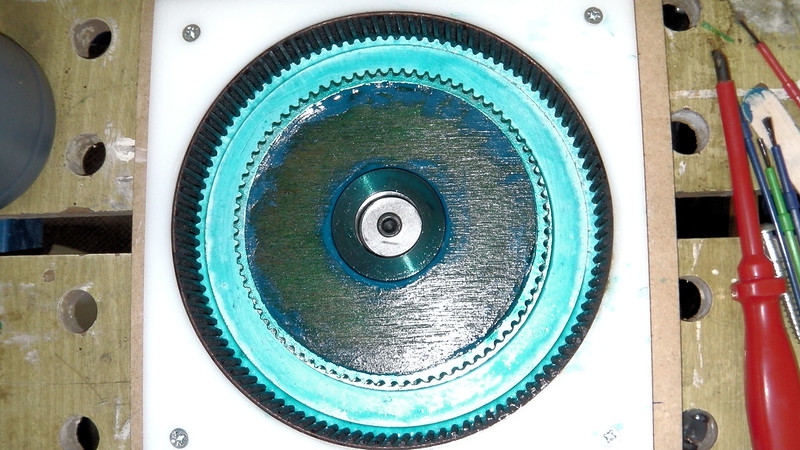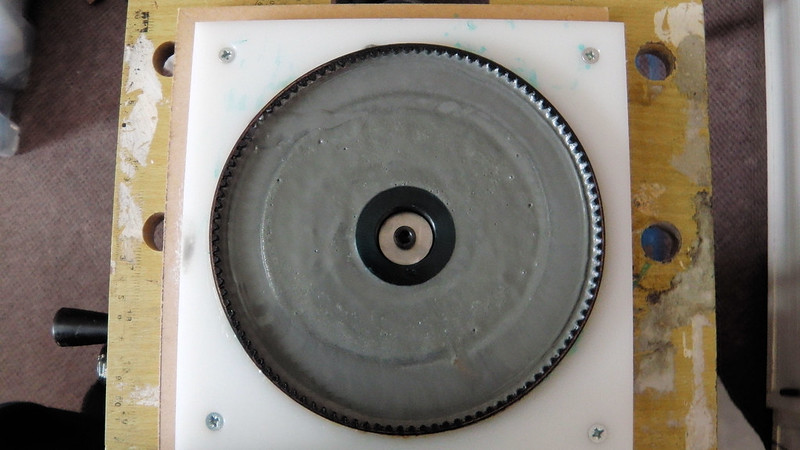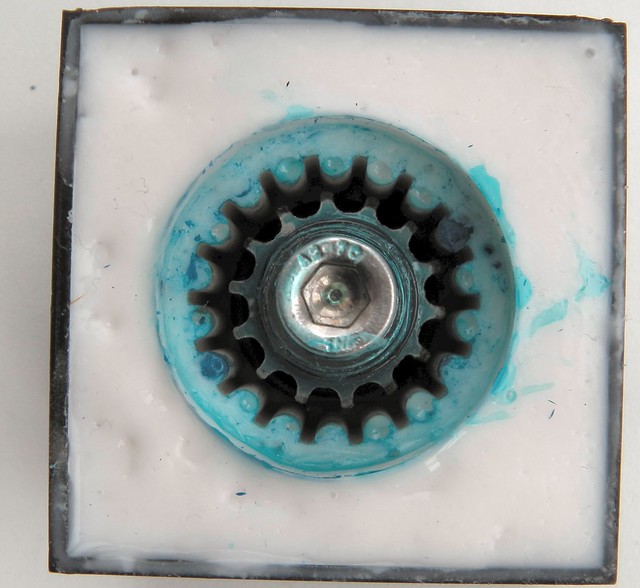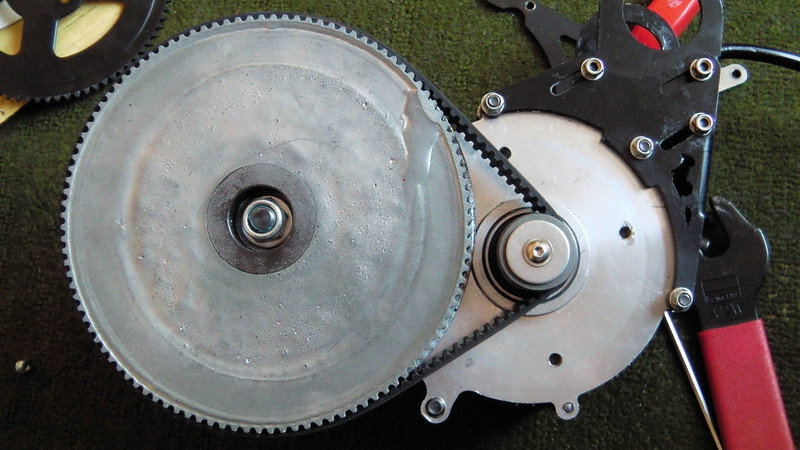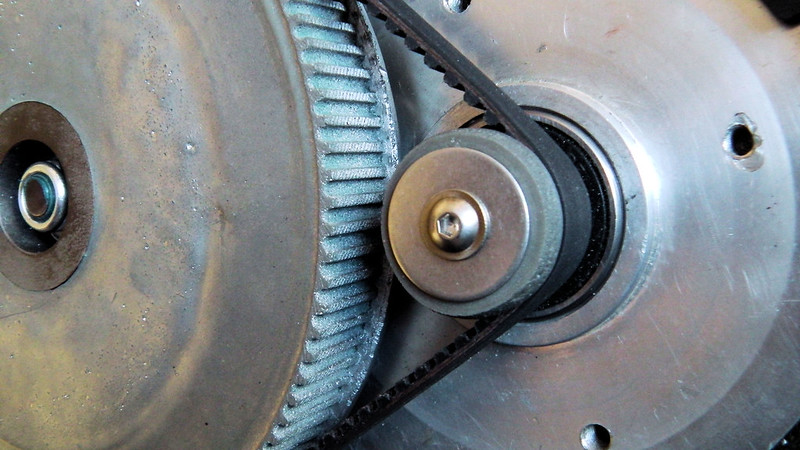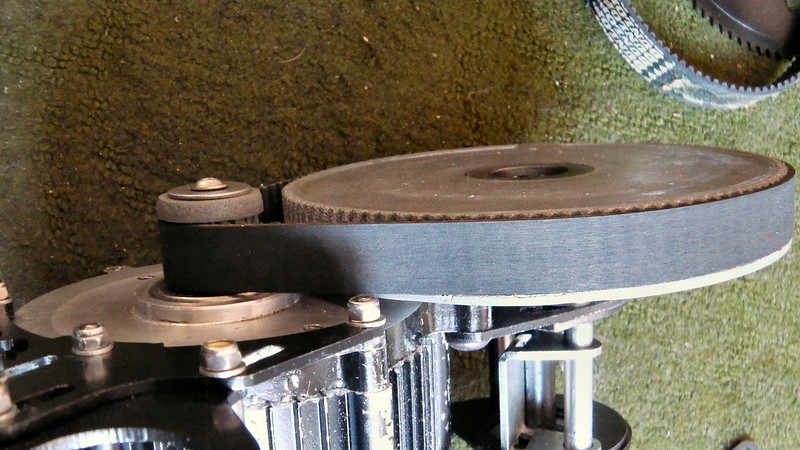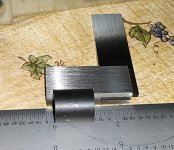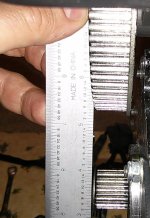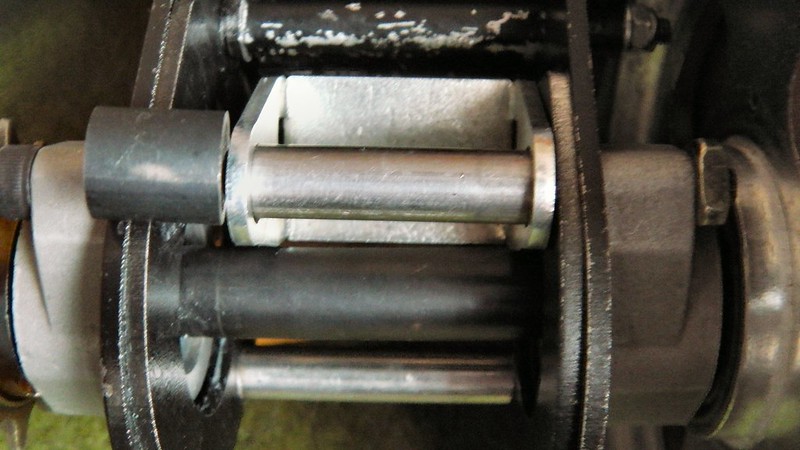Hi Christer
The power measurements were just to show the power loss being introduced by the original GNG belt tensioner; with its extreme wrap around the 14T motor pulley in an attempt to achieve more teeth engagement.
The motor was tested on the bench with no load on the output side of the jackshaft. I used my calibrated Cycle Analyst to measure the power. The initial power measurements were made with the stock 48V GNG controller @ 49V. I am now using 40V with a Greenbikekit 36-48V 9FET controller. The original setup power I measured is in keeping with full-throttle’s findings, posted last year, page 5 of this thread:
http://www.endless-sphere.com/forums/viewtopic.php?f=28&t=42785&start=100#p628795
I am not sure why the motor on its own should use such a lot of power.
I am now seeing 1.7A @ 40V with the new larger pulleys and no tensioner. Using the LighteningRod side plates my belt is quite tight with only 1-2mm of play. But I have still to test all under full load.
While I had the jackshaft disassembled to fit the new adjustable side sheets. I put 2 new good quality SS6201 2RS bearings on the jackshaft, and rebuilt the 12T freewheel with new (1/8” 3.17mm) ball bearings and grease.
It’s only a 2 pawl freewheel but there didn’t seem to be excessive ware on the ratchet teeth/pawls. Despite the fact that there was very little lubrication in the freewheel. I have only used the GNG kit for a few hundred miles, but I did note that some of the ball bearings showed signs of wear, with a grey colour. I suspect they are not hardened chrome steel, like the ones I have replaced them with. It all seems to run quieter and smoother now
And to redstone,
Re your problem with the miss alignment of the pulleys; I wonder if the jackshaft spindle has gone back and seated properly on the bearings; and have you tightened both the 80T pulley and the 12T freewheel nuts. The LighteningRod side plates should not affect the alignment of the large pulley with the motor pulley in that way; only the angle of the alignment if the jackshaft is not seated squarely on the side plates. As Mike describes on his tutorial web pages.
Spinningmagnets
Thanks for posting the link on the Re: GNG 450 brushless Mid Drive - Primary Drive Modification thread.


